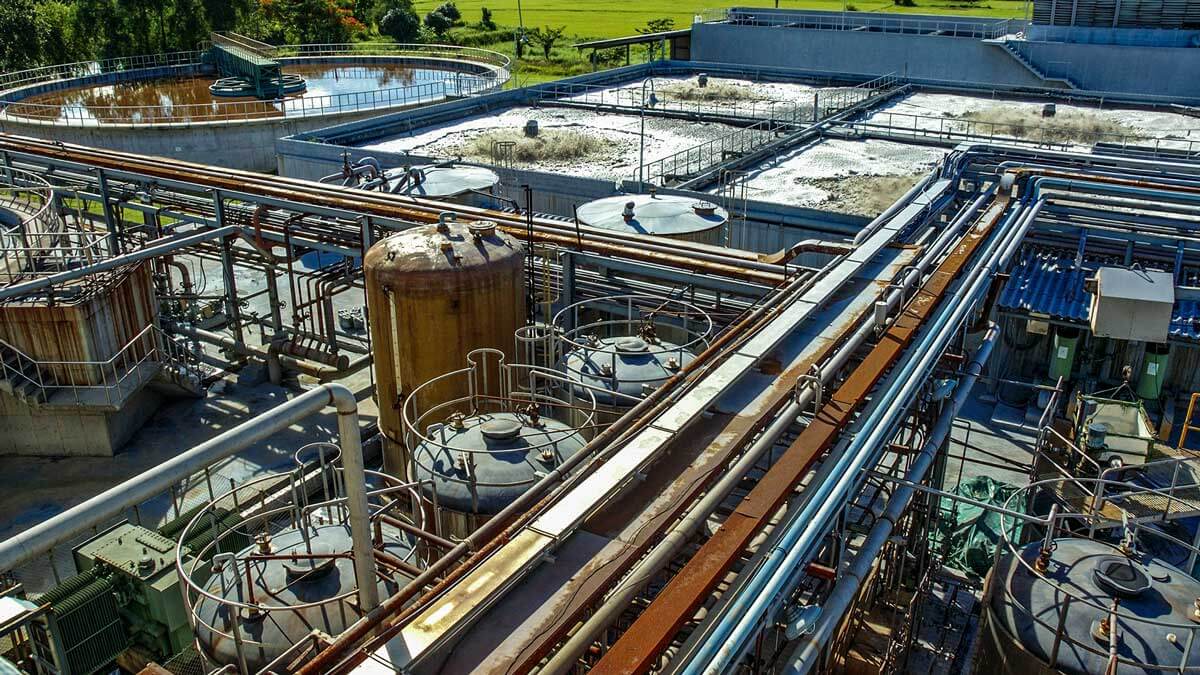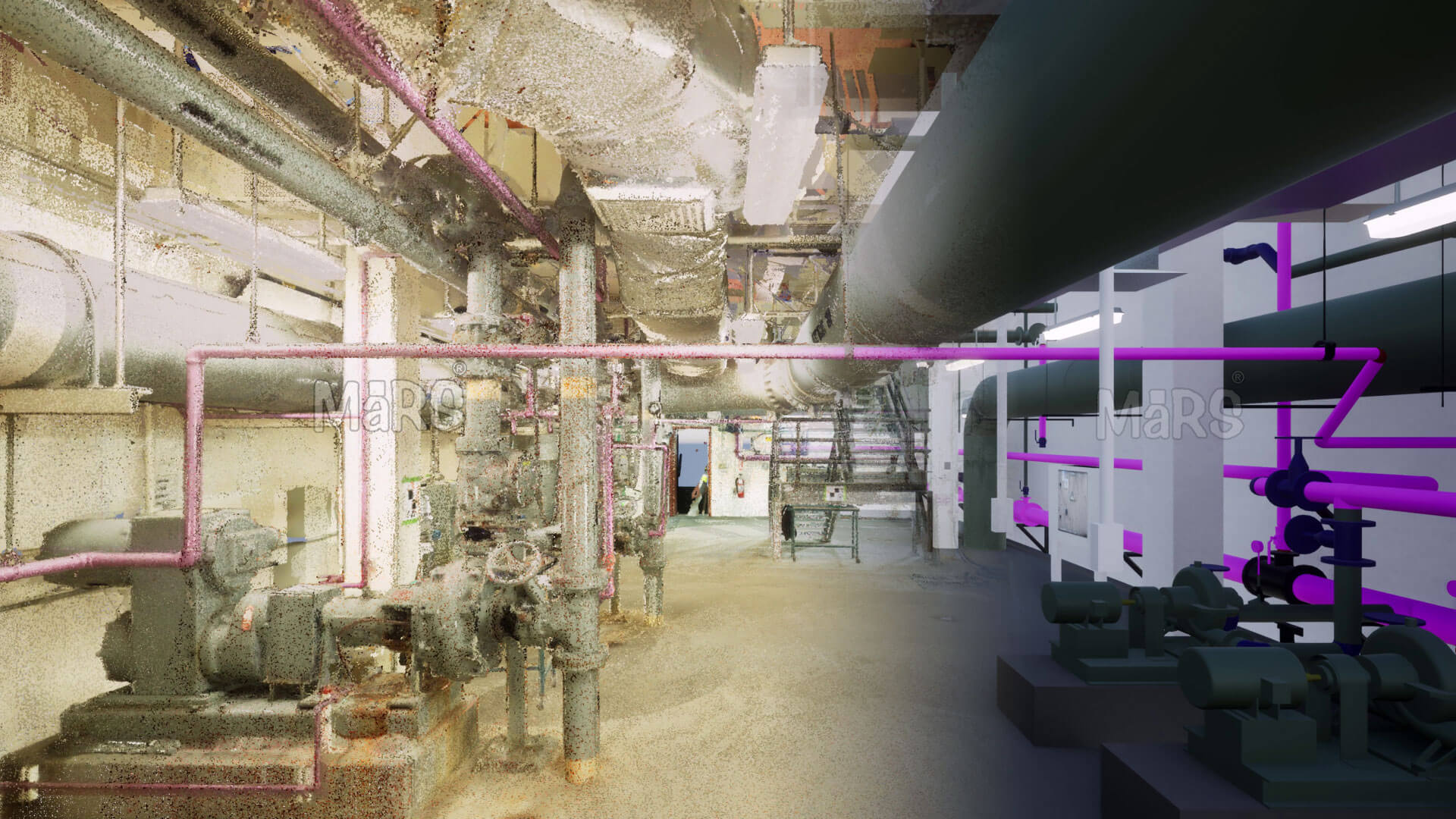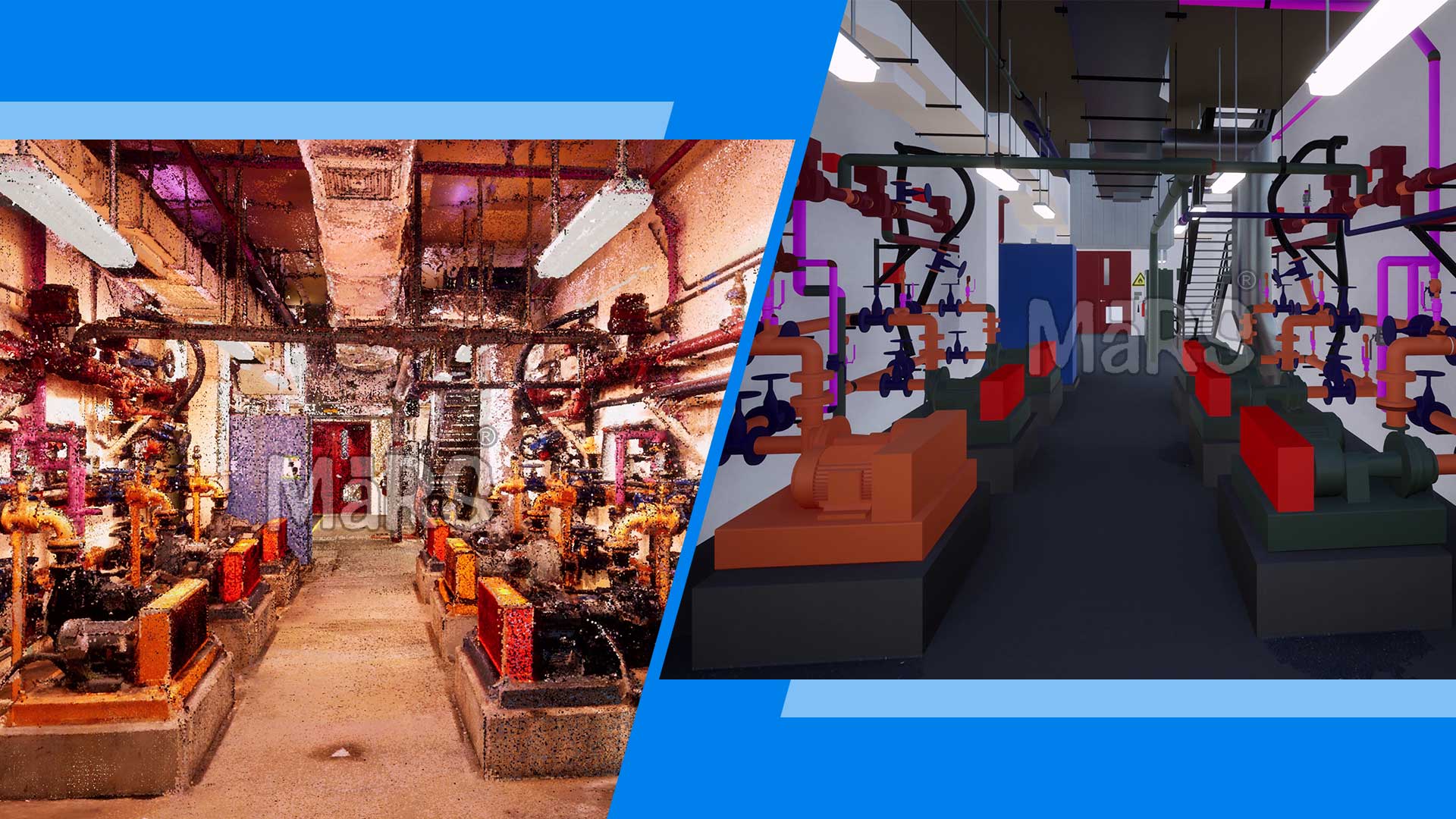Wastewater treatment plants play a crucial role in managing our water resources and ensuring public health. These facilities face numerous challenges, from maintaining operational efficiency to handling increasing regulatory demands. To meet these challenges, many plants are turning to innovative technologies. One such technology is Scan to BIM Solutions, which can significantly enhance operational efficiency. But first, let’s discuss the key challenges in wastewater treatment.
Key Challenges in Wastewater Treatment

Aging Infrastructure
Many wastewater treatment plants operate with aging infrastructure which leads to frequent breakdowns and increased maintenance costs. These issues can disrupt operations and reduce efficiency. Imagine trying to maintain equipment that’s been in place for decades. It’s a constant battle against wear and tear, and every breakdown means downtime and expensive repairs. With older systems, finding replacement parts can also be a challenge.
Regulatory Compliance
Strict environmental regulations require wastewater treatment plants to maintain high standards of operation. Compliance can be resource-intensive and challenging, especially when dealing with older systems. The paperwork alone can be overwhelming, and staying updated with the latest regulatory changes is a full-time job. Non-compliance can result in hefty fines and damage to the plant’s reputation.
Operational Costs
Running a wastewater treatment plant involves significant energy and resource consumption. Managing these costs while maintaining efficient operations is a constant struggle for facility managers. Energy bills are sky-high, and the cost of chemicals needed for treatment processes is always rising. Balancing the budget without compromising on efficiency is a daily challenge.
Data Management
Wastewater treatment plants generate vast amounts of data. Efficiently managing and using this data for decision-making and operational improvements is a complex task. Think about all the sensors and monitoring equipment constantly feeding data into the system. Without a proper data management strategy, it’s easy to miss crucial information that could prevent issues or optimize operations.
Discover How Scan to BIM Transforms Wastewater Treatment Plants

Using Scan to BIM technology offers several advantages for wastewater treatment plants that go beyond just accuracy and cost savings:
Efficient Document Management
Keeping track of all the documentation for a wastewater treatment plant can be a nightmare. Scan to BIM simplifies document management by creating a centralized digital storage. All plans, manuals, and regulatory documents are easily accessible and up-to-date. This simplifies audits and inspections.
Better Coordination and Collaboration
With a comprehensive BIM model, all stakeholders—from engineers to operators—can access the same information. This shared platform enhances communication and coordination reduces misunderstandings and ensures everyone is on the same page. It’s particularly useful during upgrades or expansions where precise information is crucial for seamless integration.
Digital Twin for Enhanced Facility Management
Developing a Digital Twin from as-built models provides a dynamic, digital replica of the wastewater treatment plant. This technology allows operators to simulate different scenarios, monitor real-time conditions, and predict maintenance needs. It’s like having a virtual control center where you can predict possible problems and address them before they disrupt operations.
Optimized Facility Management
Detailed BIM models support better facility management by providing accurate and up-to-date information about all plant components. Facility managers can plan maintenance more effectively, avoid unexpected downtime, and ensure that every part of the plant operates at its best. The ability to visualize the entire facility in a digital format makes it easier to identify and address issues promptly.
Sustainability Improvements
Scan to BIM helps wastewater treatment plants enhance their sustainability efforts. By optimizing processes and improving resource management, plants can reduce their environmental footprint. This technology enables precise monitoring and adjustments that lead to more efficient use of energy and chemicals, contributing to greener operations.
Case Studies: Real-World Examples of Scan to BIM in Action
To see how Scan to BIM can transform wastewater treatment plants, let’s look at some real-world examples. These case studies show the practical benefits and improvements that this technology brings.
One wastewater treatment plant in California faced frequent maintenance issues and regulatory compliance challenges due to outdated infrastructure. The plant’s managers decided to implement Scan to BIM to address these problems.
First, they conducted a detailed 3D laser scan of the entire facility. This scan created a complete digital model of the plant capturing every pipe, tank, and piece of equipment. The resulting BIM model provided a clear and accurate representation of the facility.
Using this BIM model, the plant’s managers could identify and address problem areas more effectively. They improved maintenance schedules by pinpointing the exact locations and conditions of various components. This proactive approach reduced downtime significantly because the team could now foresee potential issues and fix them before they become critical.
The detailed model also helped the plant comply with environmental regulations. Managers could easily access up-to-date information for inspections and audits, streamlining the compliance process. The digital model provided transparency and ensured that all components met regulatory standards.
Additionally, the California plant used the BIM model to plan upgrades and expansions. The accurate digital representation allowed engineers to integrate new systems seamlessly with the existing infrastructure. This integration minimized disruptions and ensured the plant continued to operate efficiently during the upgrade process.
Implementation Process – Steps to Integrate Scan to BIM
- Assess the Current State: Start by evaluating the existing infrastructure and identifying areas where Scan to BIM can bring improvements. This assessment helps prioritize the implementation process.
- Choose the Right Technology: Select the appropriate 3D laser scanning equipment and BIM software that best suits the plant’s needs. Consider factors such as accuracy, ease of use, and compatibility with existing systems.
- Conduct 3D Scanning: Perform detailed 3D laser scans of the entire facility. Ensure that all critical components and areas are captured accurately. This step creates a comprehensive digital representation of the plant.
- Create the BIM Model: Use the scanned data to develop a Building Information Model. The BIM model should include all relevant details, such as equipment, piping, and structural elements. Ensure that the model is accurate and up-to-date.
- Integrate with Existing Systems: Incorporate the BIM model into the plant’s existing management systems. This integration allows for seamless access to information and improves overall coordination.
- Train Staff: Provide training for staff on how to use the new technology. Ensure that everyone understands how to access and utilize the BIM model for daily operations and maintenance tasks.
- Monitor and Update: Continuously monitor the system’s performance and make updates as needed. Regularly update the BIM model to reflect any changes or upgrades to the facility.
Digital Twin for Wastewater Plant
A Digital Twin is a dynamic digital replica of a physical asset such as a wastewater treatment plant. Developing a Digital Twin from as-built models offers powerful advantages for facility management.
The Digital Twin allows operators to simulate different scenarios, monitor real-time conditions, and predict maintenance needs. This proactive approach helps prevent issues before they occur. It will reduce downtime and improve efficiency. By providing a real-time view of the facility, the Digital Twin supports better decision-making and enhances overall management.
Additionally, the Digital Twin facilitates remote monitoring and control so that operators to manage the plant from anywhere. This capability is especially valuable in situations where on-site access is limited or challenging.
Future Trends and Innovations in Wastewater Treatment
The field of wastewater treatment is continuously growing with new trends and innovations to enhance operations and sustainability.
One notable trend is the increased focus on sustainability. Wastewater treatment plants are adopting green technologies and practices to reduce their environmental impact. This transformation includes optimizing energy use, reducing chemical consumption, and improving water reuse.
Another innovation is the integration of artificial intelligence (AI) and machine learning (ML) into wastewater treatment processes. These technologies can analyze vast amounts of data, identify patterns, and optimize operations. For example, AI can predict equipment failures and suggest preventive maintenance to further enhance operational efficiency.
Moreover, advancements in sensor technology are improving data collection and monitoring capabilities. High-resolution sensors provide real-time data on water quality, flow rates, and other critical parameters. This information allows for more precise control and management of the treatment process.
Maximizing ROI with Scan to BIM
To get the most out of Scan to BIM, wastewater treatment plants need to focus on maximizing their return on investment (ROI). Here are some strategies to achieve this:
- Prioritize High-Impact Areas: Focus on areas where BIM can bring the most important improvements. These areas might include aging infrastructure, critical maintenance points, or regulatory compliance.
- Use Data for Decision-Making: Use the detailed information provided by the BIM model to make informed decisions. Analyze data trends and patterns to optimize operations and reduce costs.
- Improve Training and Support: Ensure that staff are well-trained and supported in using the new technology. Provide ongoing training to keep everyone updated on best practices and new features.
- Collaborate with all Stakeholders: Engage all stakeholders including engineers, operators, and regulatory bodies in the implementation process. Collaboration ensures that everyone benefits from the technology and contributes to its success.
- Regularly Update the BIM Model: Keep the BIM model up to date by regularly updating it with new data and changes. A regularly updated model ensures accurate information for decision-making and planning.
Conclusion
Wastewater treatment plants are essential for maintaining public health and protecting our environment. By adopting BIM technology, these facilities can overcome many operational challenges and improve efficiency. BIM not only provides accurate digital models but also supports better decision-making, enhances facility management, and ensures compliance with regulations.
As we move forward, integrating advanced technologies like Scan to BIM and Digital Twins will continue to play an important role in optimizing operations. These innovations help us manage our water resources more effectively and sustainably. So, if you’re involved in managing a wastewater treatment plant, consider how Scan to BIM could transform your operations for the better. It’s a step towards a more efficient, compliant, and future-ready facility.

